Let’s suppose you are a marketer. You are enjoying a beautiful day at your branch office, surrounded by high-quality products. You have full confidence in what you are selling, but despite this, potential customers merely glance at your cozy corner or spend just a little time inside. This would feel quite disheartening, wouldn’t it? This scenario is similar to having a web page that experiences the same lack of engagement. As experts, we don’t want anyone to face this situation. Therefore, let’s have a heart-to-heart discussion about the importance of time on page.
The Importance of Time on Page:
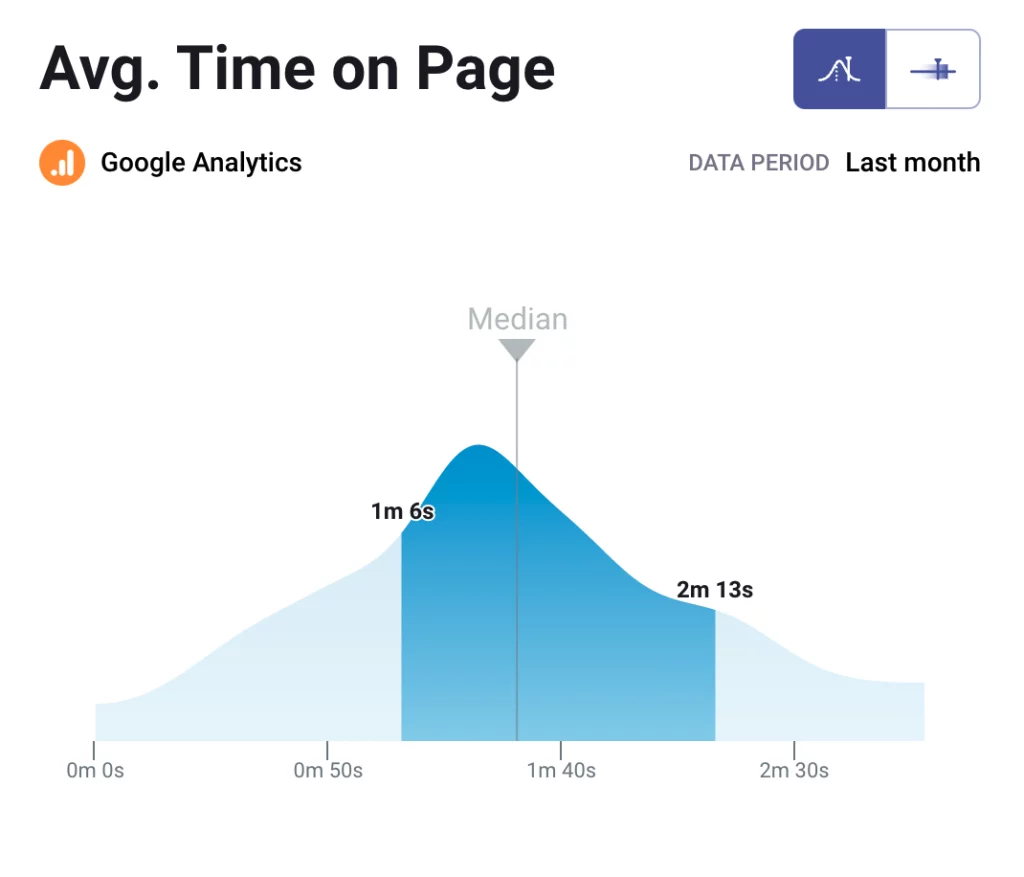
So, why is the duration of time users spend on a page important? While having quality content is crucial, it must also captivate users to keep their attention. The time users spend on your page indicates their engagement and interest.
- Understanding Your Website: When session durations are low, users need to explore or understand your website and include what you are offering.
- Bounce Rate: A high bounce rate results from users quickly leaving your site, negatively indicating your website’s health and SEO performance. It suggests that visitors need help finding what they need or are not engaged by the content.
Given these points, finding ways to increase users’ time on your pages is essential. Here are some insights and tips on why this matters and how to improve it.
The Advantages of Increased User Time on Page:
Before exploring specific methods, let’s explore the benefits of increased user time on the page, which are distilled from our expertise.
- Enhanced Conversion Rates
When users spend more time on your website, they are more likely to purchase your service or product. Extended time on the page means users are more engaged, understand your offerings better, and are more likely to convert into customers.
- Increased Website Revenue
More time on your site translates to higher potential revenue. This is particularly important for sites that rely on advertising. The longer users stay, the more ads they see, which can significantly boost your ad revenue.
- Insights into Customer Behavior
The data on how long users stay on your page provides valuable insights into customer behavior. If users are leaving quickly, it signals that something needs to change. Perhaps the content is not engaging, or the user experience is lacking. By understanding these signals, you can make informed changes to improve your website.
Strategies to Improve Time on Page:
a. Internal linking
One of the most attractive, easy, and practical strategies for increasing website time is to incorporate links that open in new tabs. This technique ensures that users do not leave your original site while exploring the new tab. No matter how much time users spend on the new tab, your initial website remains open, encouraging them to return to it.
Furthermore, developing the habit of linking to relevant pages within your site can significantly enhance user engagement. Here are some of the critical advantages of internal links:
Key Features of Internal Linking
- Reduces Bounce Rate: By providing users with additional relevant content to explore, internal links can decrease your bounce rate, keeping visitors on your site longer.
- Boosts SEO: Internal linking helps search engines understand your site’s structure and the relationship between different pages, improving your SEO without the need for expensive plugins or tools.
b. Improve Your Website’s Design
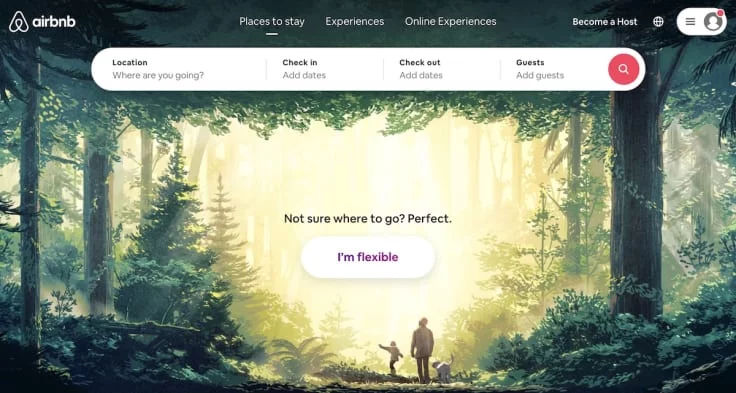
First impressions are crucial. Just as people form quick judgments about others, they also make snap decisions about websites. A well-designed website can significantly increase the time visitors spend on your pages. Here’s how to enhance your website’s design:
Key Features for Improving Website Design
- Simple Yet Stylish Design: A modern, clean design can make a significant difference. Avoid clutter and ensure your site has a contemporary look that appeals to today’s users.
- User-Friendly Interface: An intuitive interface helps visitors navigate your site easily, allowing them to find what they want without distractions.
- Organized Content: Present your content in a structured, organized manner. Refrain from scattering products or information haphazardly. A professional, businesslike presentation can build trust and keep users engaged.
- Visible and Accessible Information: Place the most important and valuable information in easily accessible areas, preferably at the top of the page. This ensures users can quickly find what they need when they land on your site.
c. Table of Contents
Adding a table of contents to your website is a smart move to improve navigation and user experience. It helps users quickly find the information they’re looking for and keeps them engaged.
Key Features of a Table of Contents
- Enhanced Navigation: A table of contents provides a clear guide to the content on your page, making it easier for users to find specific sections.
- Increased Engagement: By making navigation straightforward, you can keep users on your site longer as they explore different content sections.
d. Fast Load Time
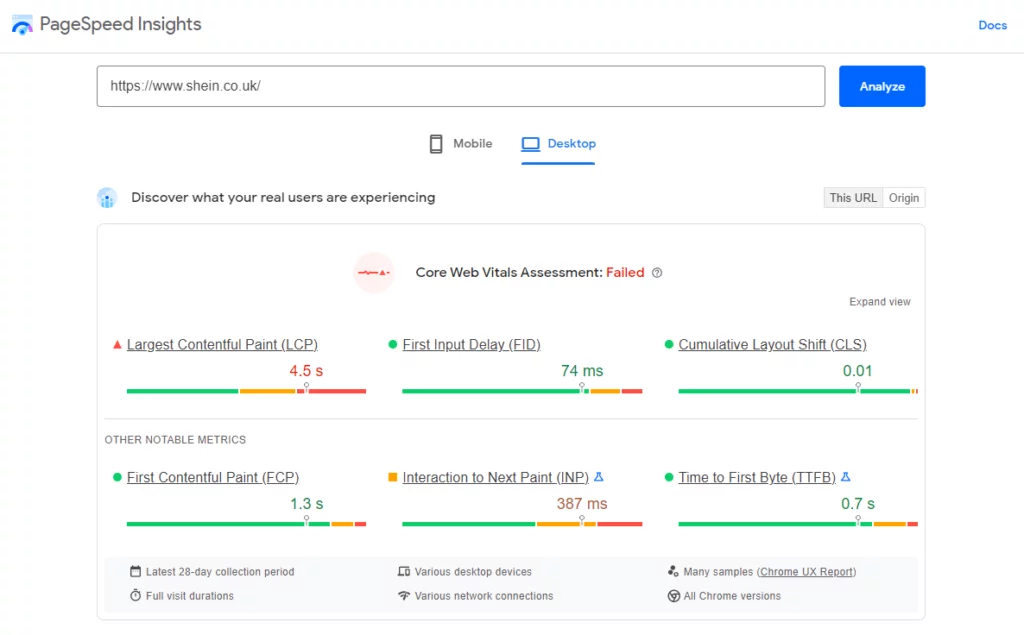
A fast-loading website is crucial for retaining visitors. No matter how excellent your content or design is, a slow-loading page can drive users away. Here’s how to ensure your site loads quickly:
Critical Features for Optimizing Load Time
- Optimize Server Response Time: Ensure your server responds quickly to user requests. This can significantly improve overall load times.
- Image Optimization: Compress and optimize images to reduce load times without sacrificing quality. Large, unoptimized images are a common cause of slow websites.
- Minimize HTTP Requests: To speed up loading times, reduce the number of elements on your page that require separate HTTP requests, such as scripts and images.
E. Provide Better Readability
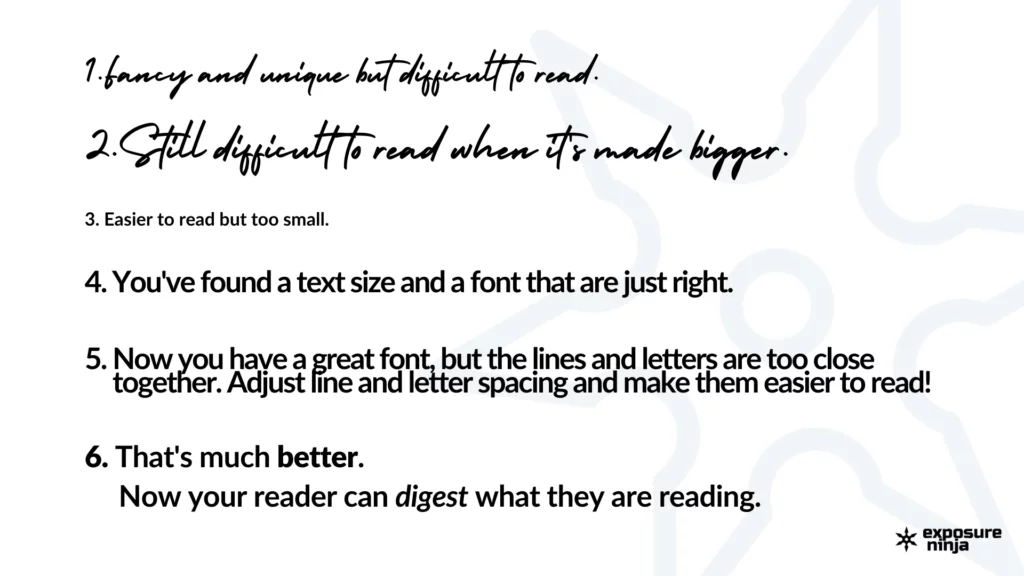
Whether you run a blog or manage a marketing website, ensuring smooth readability for your users is crucial. Improved readability keeps visitors engaged and encourages them to stay on your site longer. Here are some detailed tips to enhance readability:
Key Features for Better Readability
- Cross-Device Compatibility: Design your website to be easily readable on all devices and platforms, not just for computer users. This includes mobile phones, tablets, and various screen sizes.
- Appropriate Font Choices: Select fonts that are easy to read. The font type and size should prioritize readability to ensure users can comfortably consume your content.
- Organized Content: Avoid dense paragraphs. Split and manage your content into smaller, digestible sections. Use bullet points and numbered lists to make the information more accessible.
- Visually Appealing Layouts: Arrange your sentences and paragraphs visually appealingly. Proper spacing and alignment can significantly improve user engagement.
f. Personalize Your Content
In the age of engagement, personalizing your content can significantly enhance user experience and keep visitors on your page longer. Personalization makes users feel special and catered to, which can increase their time spent on your site. Here’s how to personalize your content effectively:
Critical Features for Personalizing Content
- Data Collection: Obtain consent from your users for data collection and usage. Use proper systems to gather relevant data, such as previous browsing history and preferences.
- Relevant Content: Based on the collected data, tailor your content to meet your visitors’ specific interests and needs. This relevance will encourage users to spend more time on your site.
- Customized Experiences: Implement personalized recommendations, such as suggesting related articles, products, or services that align with the user’s past behavior.
g. Use Different Ways to Serve Your Content
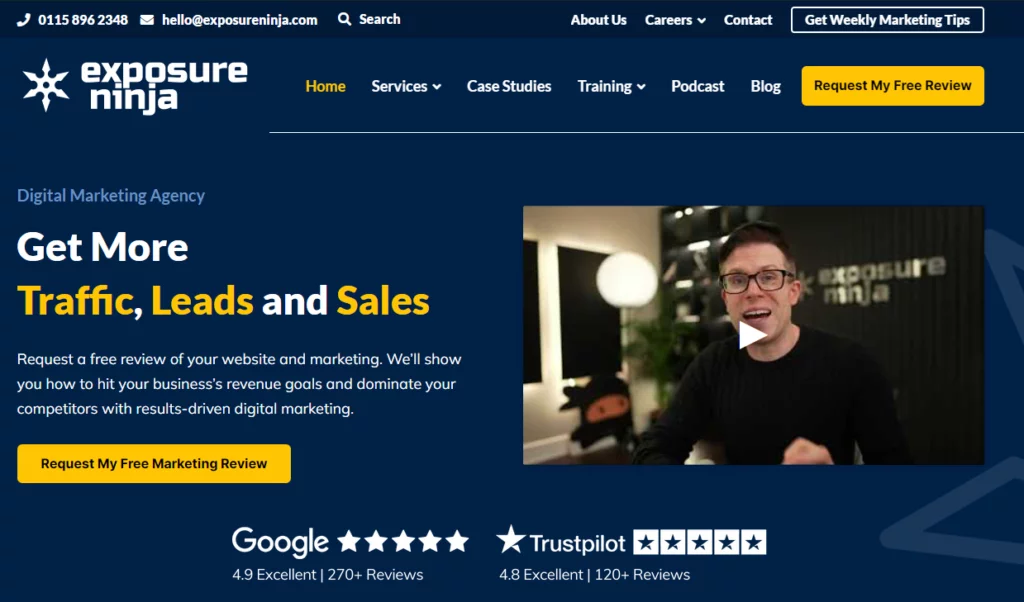
People absorb content in different ways. Offering a variety of content formats can cater to diverse preferences and keep users engaged. Here are some effective methods to serve your content:
Critical Features for Diverse Content Delivery
- Videos: Videos are highly effective for capturing attention and are easy to consume. Adding video-based content to your pages can significantly increase user engagement and time spent on your site.
- Images: Where videos are impossible, incorporate images to enhance visual richness. Images break up the text, making the content more engaging and digestible.
- Interactive Content: Consider adding interactive elements such as quizzes, polls, and infographics. Interactive content can engage users actively and keep them on your page longer.
h. Contents Demanding User Interaction
Some users prefer to be active participants rather than passive readers. By encouraging user interaction, you can significantly increase their time on your page. Here’s how to foster user interaction:
Key Features for Interactive Content
- Comment Sections: Enable comment sections to allow users to express their opinions and engage with your content. This interaction creates a sense of community and keeps users coming back.
- Questionnaires and Surveys: Implement pop-up questionnaires and surveys related to your content. Ask for users’ opinions and feedback to make them feel involved.
- User-Generated Content: Encourage users to contribute content, such as reviews, testimonials, or forum posts. This not only increases engagement but also adds value to your site.
i. Post Summaries
Including post summaries in your blog can significantly increase users’ time on your page. Post summaries provide readers with a quick glimpse of the content, helping them understand the article from the beginning. This prevents visitors from leaving your site immediately. By offering an instant overview, you allow readers to quickly infer the value of your content without needing an extended explanation.
Key Features of Post Summaries
- Immediate Insight: Gives readers a brief idea of the article’s content, encouraging them to read further.
- Enhanced Engagement: Reduces bounce rates by capturing the reader’s interest early.
- Improved Navigation: Helps users quickly decide which posts to read, improving their overall experience.
j. Create Unique Content
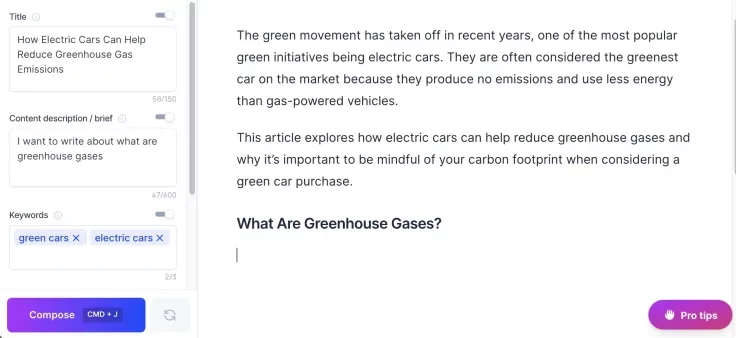
Creating unique content is essential despite how challenging it can be. Unique content is highly valued by users tired of encountering the same information on different websites. Content creators often imitate each other in many blogs, offering nothing new or original. This repetition leads to user disengagement. Fresh and original content captures users’ attention and keeps them engaged, like fireflies gravitating toward the light.
Key Features of Unique Content
- Originality: Provides new perspectives and information, distinguishing your site from others.
- User Engagement: Keeps users interested and encourages them to explore more of your site.
- SEO Benefits: Improves search engine rankings by offering valuable, unique content.
k. Mobile Version
Smartphones are widely used today due to their functionality and convenience. People often use their phones to browse websites, whether they are relaxing at home or on the go. Therefore, having a mobile version of your site is crucial. A website not optimized for mobile devices can be frustrating, leading to users leaving your site quickly. Ensuring your site is mobile-friendly enhances user experience and retention.
Key Features of a Mobile Version
- Responsive Design: Automatically adjusts to different screen sizes, providing a seamless experience.
- Ease of Use: Simplifies navigation and accessibility on mobile devices.
- Increased Engagement: Keeps mobile users on your site longer, reducing bounce rates.
l. Credibility
Establishing credibility is vital for gaining the trust of your users, whether they are purchasing products or engaging with your content. There are several ways to build credibility on your site:
Critical Features for Building Credibility
- Bios and Testimonials: Include detailed bios and testimonials to show expertise and positive experiences.
- Social Profile Links: Make your social media profiles visible and accessible to provide additional trust signals.
- Client Reviews: Display reviews and ratings from previous clients to build confidence among new visitors.
m. Live Chat Service
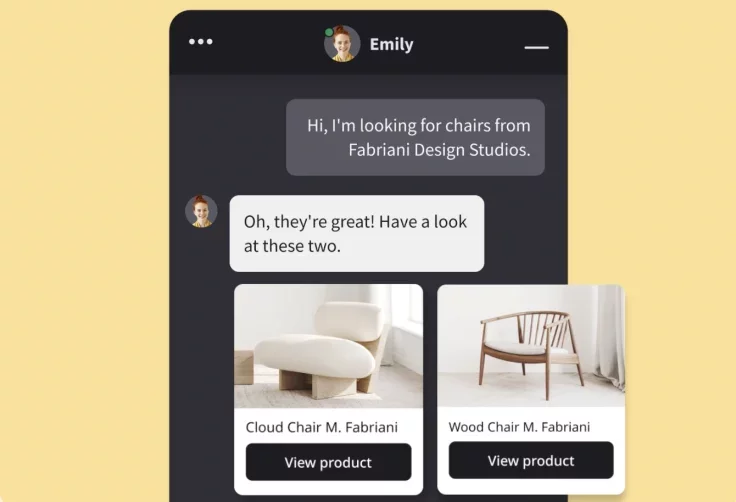
Implementing a live chat service or chatbot can significantly enhance user trust and engagement. When users encounter issues or have questions, immediate assistance can make a huge difference. A live chat service provides real-time support, making users feel valued and more likely to stay on your site longer.
Key Features of a Live Chat Service
- Real-Time Support: Offers immediate assistance to users, solving their problems quickly.
- Increased Engagement: Encourages users to stay on your site longer by providing a direct communication channel.
- Enhanced User Experience: Improves overall satisfaction by addressing user concerns promptly.
Conclusion:
Implementing strategies to increase time on a page can be very effective. Users who spend only 20 seconds on your site are unlikely to engage with your content thoroughly. Using these strategies, you can increase the duration and ensure users spend more meaningful time on your site.
Remember, the key to increasing time on page is to continuously monitor your analytics, experiment with different approaches, and refine your strategies based on what works best for your audience. With dedication and creativity, you can create a website that captivates visitors and keeps them coming back for more.
FAQs in Time on Page:
Do I Need To Pay For Methods To Increase Time On the Page?
It depends. If your website’s design needs improvement, you might need to invest in a graphic designer. However, if the design is already good, you should focus on enhancing the quality of your content and its organization.
How Can I Measure Time On a Page?
Google Analytics automatically measures time on page through its Time on Page feature. Session duration can also be tracked using the Google Analytics Session Duration feature.
What should I do if I notice a high bounce rate?
Investigate the possible reasons for the high bounce rate. It could be due to slow load times, unengaging content, or poor user experience. Make necessary adjustments and track changes in user behavior.
How often should I update my website content?
Regular updates are essential. The frequency depends on your industry and the type of content. However, a good rule of thumb is to review and refresh content at least once a quarter.
Can multimedia elements increase time on page?
Yes, multimedia elements such as videos, images, and infographics can make content more engaging and easier to digest, increasing the time users spend on a page.



